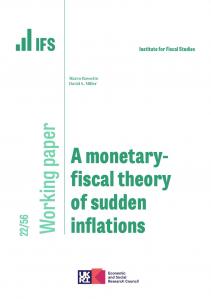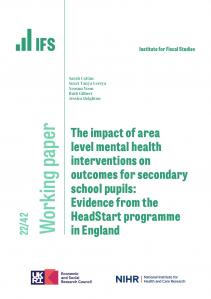Governments are responsible for spending huge amounts of public money. Effective control of that spending is essential if governments are to meet their fiscal objectives, deliver their desired policy outcomes, and achieve value for money for the taxpayer. A new IFS report, published today as part of a wider study of the history of public expenditure control, uses more than twenty years of data to analyse the planning and control of public expenditure between 1993 and 2015.
This period includes times of public expenditure restraint (the 1990s and 2010s) and of increased spending (between 2000 and 2010). It also includes periods of single-party and coalition governments, changing macroeconomic conditions, and numerous reforms to the framework for planning and controlling public spending. Over these different periods with different contexts, rules and measurements, on the whole, spending has been controlled quite effectively – in the sense that spending has not tended to turn out too differently to final plans. There are clearly strong incentives for departments not to overspend. Even in the face of deep budget cuts since 2010, departments have continued to underspend by a considerable amount. Our analysis suggests, however, that this is far from the whole story.
Plans are often changed after they have been set. In particular, plans tend to be adjusted in the direction of the government’s overarching fiscal objectives. So during times of fiscal tightening, when the government is aiming to cut public spending, plans tend to get revised downwards, and spending is cut by more than planned. When the government is trying to boost public spending, plans get topped up and spending increases by even more than planned. As a result, errors in medium-term expenditure forecasts tend to be biased in the direction of the government’s spending plans.
These repeated changes to spending plans are indicative of a wider finding: that, despite their intent, numerous features of successive spending frameworks have not proved to be binding constraints on Treasury or government behaviour. Three particular examples of this:
- The supposedly ‘firm and fixed’ nature of departmental budget settlements announced in Spending Reviews (designed to give departments greater certainty over future budgets). While plans set in the first four spending reviews were, for the most part, adhered to, during the late 2000s Labour gave top ups to its spending review plans, while the coalition government during the 2010s made additional cuts to departmental budgets outside of spending reviews.
- The separate ring-fencing of department’s capital and current budgets (designed to prevent capital spending being inappropriately cut in ‘hard times’). In recent years the Treasury has allowed some departments, most notably the Department of Health, to re-allocate some of its capital budget towards non-investment spending.
- End-year flexibility (which was designed to allow departments to smooth spending over time and achieve better value for money). Underspends were simultaneously added to EYF entitlements for departments but also effectively ‘spent’ each year by the Treasury. Ultimately, accumulated entitlements were wiped out in 2010 when the system was replaced.
This all goes to show that spending rules are only as robust as the political will behind them. If they no longer align with the Treasury’s desires then they can either be overlooked or altered.
We also find that governments of all political stripes have struggled to effectively control capital spending – in terms of spending what was originally planned. Investment plans are almost never met and departments have struggled to spend their capital allocations, whether those allocations were being cut or increased over time. This is illustrated in Figure 1, which shows how investment spending turned out relative to successive plans made by government up to 2010−11. This finding is particularly relevant now, given the current government’s ambition to boost capital investment to high levels by recent historical standards.
Figure 1: Public sector net investment, 1992−93 to 2010−11
Note: Out-turns have been calculated in line with the approach described in Appendix A of the report.
Source: Various Financial Statement and Budget Reports, Pre-Budget Reports, Spending Reviews and Public Expenditure Statistical Analyses. Out-turns for 2008−09 and 2009−10 are adjusted for classification changes relating to financial interventions.
Quantitative analysis alone cannot provide all of the answers as to why and how public spending plans were altered over this period, and the relative role played by different governments, changing macroeconomic conditions, and reforms to the framework for planning and controlling public spending. This report is the first stage of a wider project that is using in-depth interviews and more qualitative evidence to help understand some of the trends and relationships we document here, and contribute to a more complete understanding of how, and how well, successive governments in the UK have planned, managed and controlled public expenditure.
Key findings from this report will be presented at an event at the Institute for Government at 12:45 on Monday 16 July 2018. A live stream of the event can be viewed online here.










